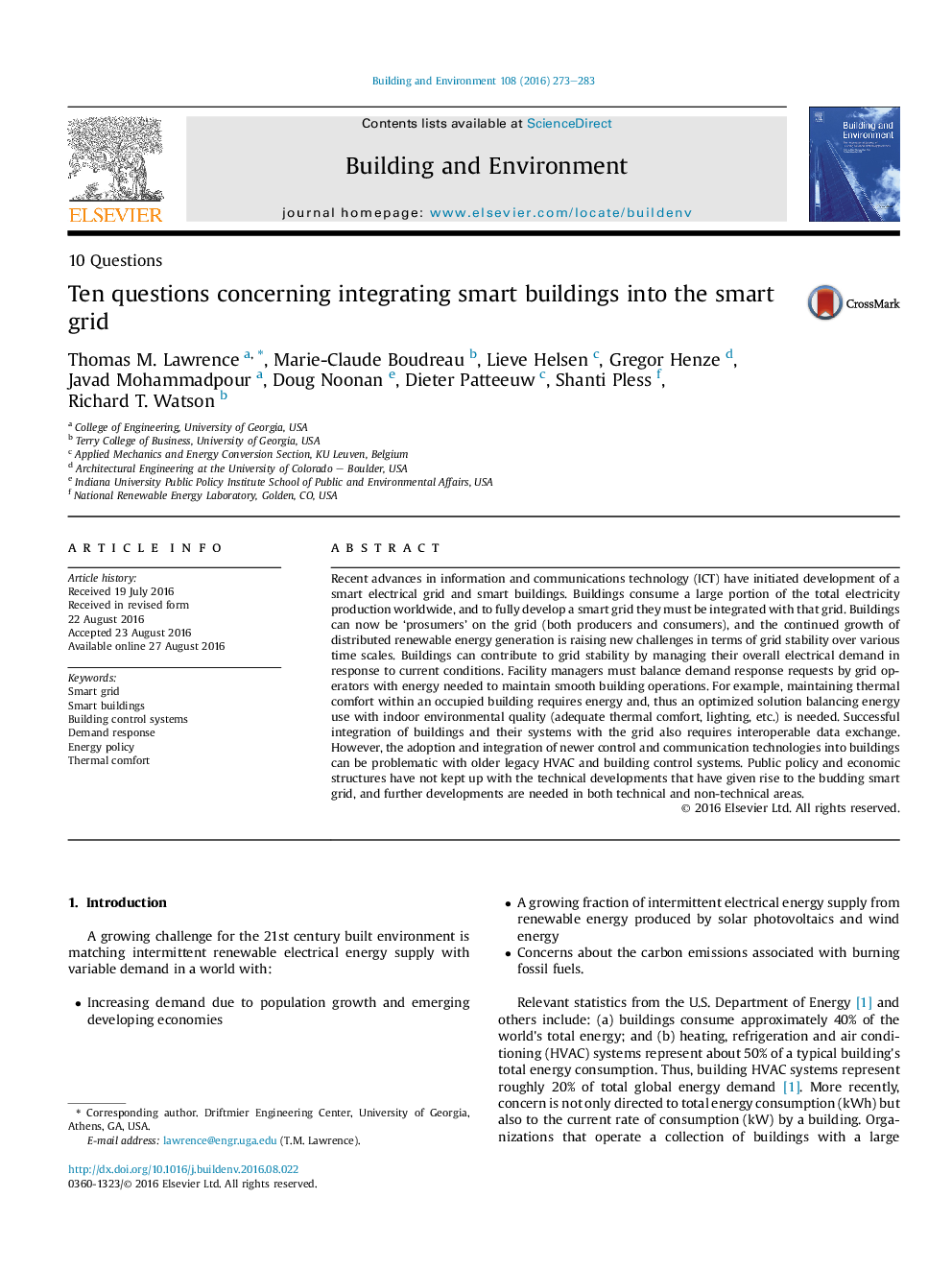| کد مقاله | کد نشریه | سال انتشار | مقاله انگلیسی | نسخه تمام متن |
|---|---|---|---|---|
| 6479271 | 1428384 | 2016 | 11 صفحه PDF | دانلود رایگان |
- Technology, communication system and standard protocols are enabling integrating smart buildings with the grid.
- Demand response is the prime method for initial integration of smart buildings to the grid.
- Potential security issues do exist, but benefits include better integration of demand and supply of electrical energy.
- Public policy measures can help push the interconnection of smarter grids and buildings.
- Much more research is needed in building controls to effectively integrate demand response.
Recent advances in information and communications technology (ICT) have initiated development of a smart electrical grid and smart buildings. Buildings consume a large portion of the total electricity production worldwide, and to fully develop a smart grid they must be integrated with that grid. Buildings can now be 'prosumers' on the grid (both producers and consumers), and the continued growth of distributed renewable energy generation is raising new challenges in terms of grid stability over various time scales. Buildings can contribute to grid stability by managing their overall electrical demand in response to current conditions. Facility managers must balance demand response requests by grid operators with energy needed to maintain smooth building operations. For example, maintaining thermal comfort within an occupied building requires energy and, thus an optimized solution balancing energy use with indoor environmental quality (adequate thermal comfort, lighting, etc.) is needed. Successful integration of buildings and their systems with the grid also requires interoperable data exchange. However, the adoption and integration of newer control and communication technologies into buildings can be problematic with older legacy HVAC and building control systems. Public policy and economic structures have not kept up with the technical developments that have given rise to the budding smart grid, and further developments are needed in both technical and non-technical areas.
Journal: Building and Environment - Volume 108, 1 November 2016, Pages 273-283
